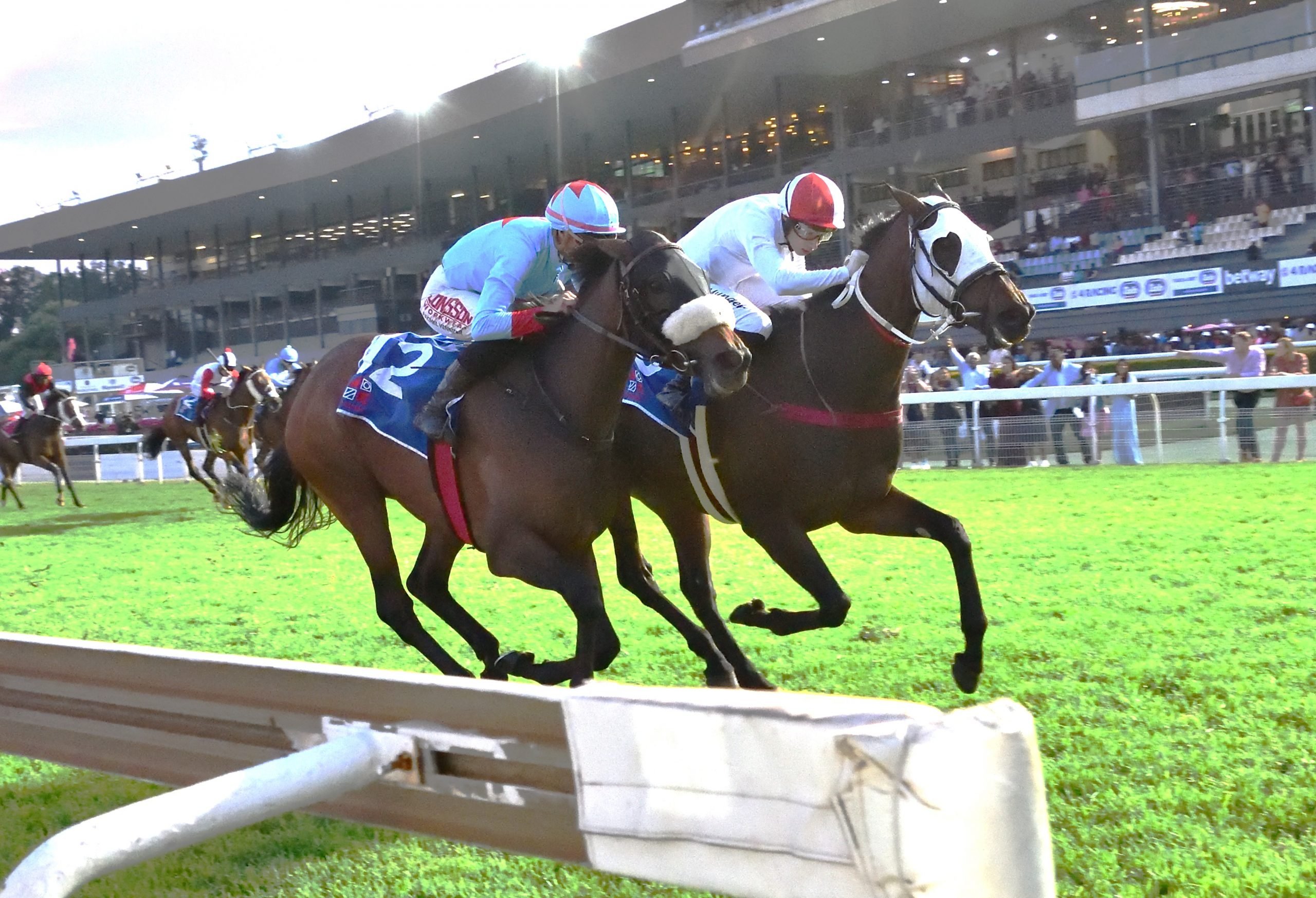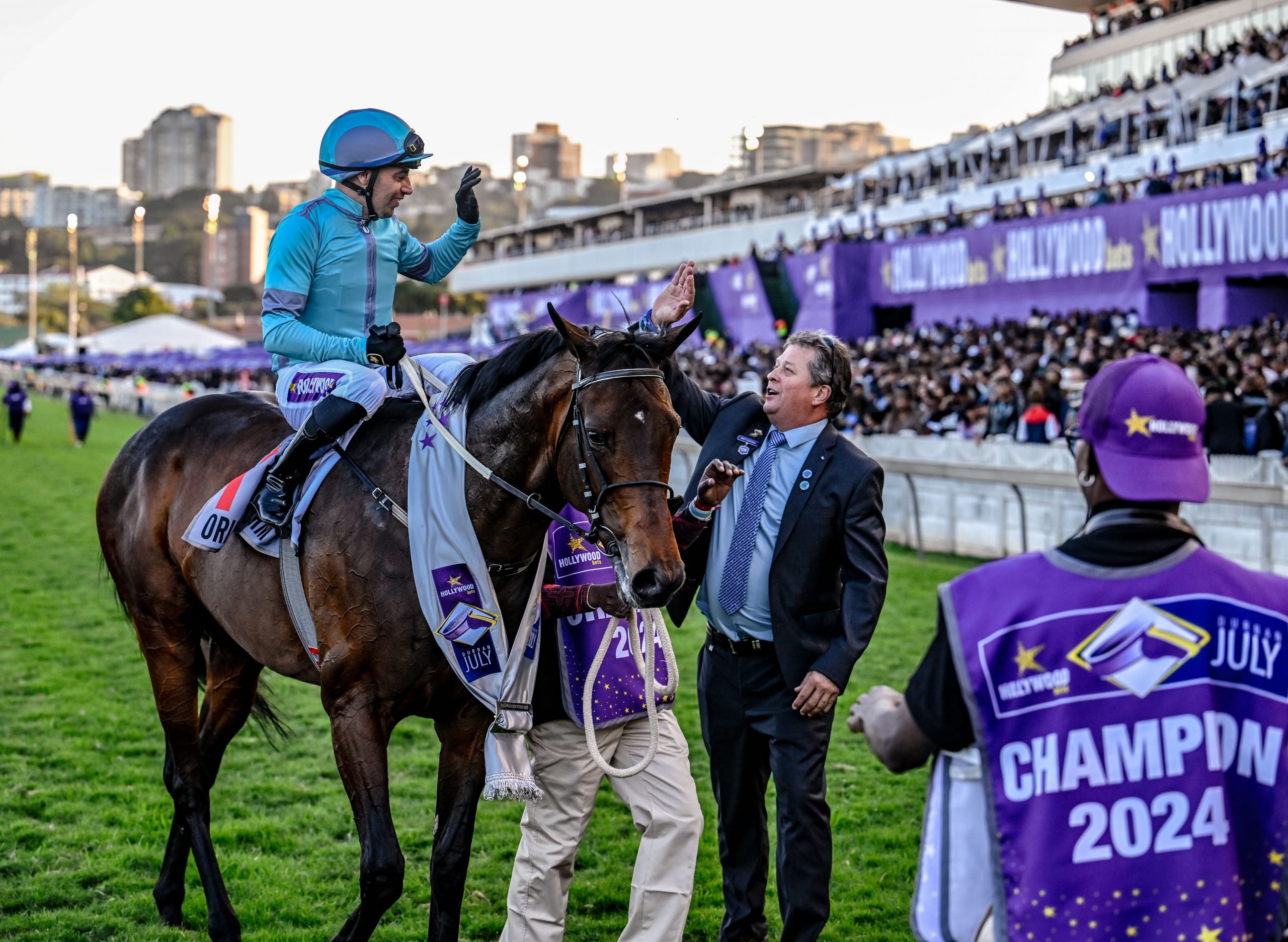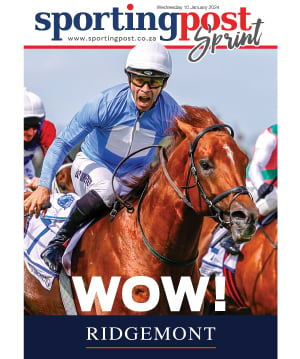Justify, unbeaten Triple Crown winner and the 2023 Champion Sire of 2yo’s in USA has South African bred Hawaii on both sides of his pedigree.
Robin Bruss writes that it’s more than 50 years since Hawaii became one of the legends of the turf winning 15 of his 18 starts in South Africa before going to race in America and winning 6 of his 10 starts to become Champion Grass Horse of 1970 and retiring to stud to make his mark in history by siring, amongst others, the English Derby winner, Henbit.
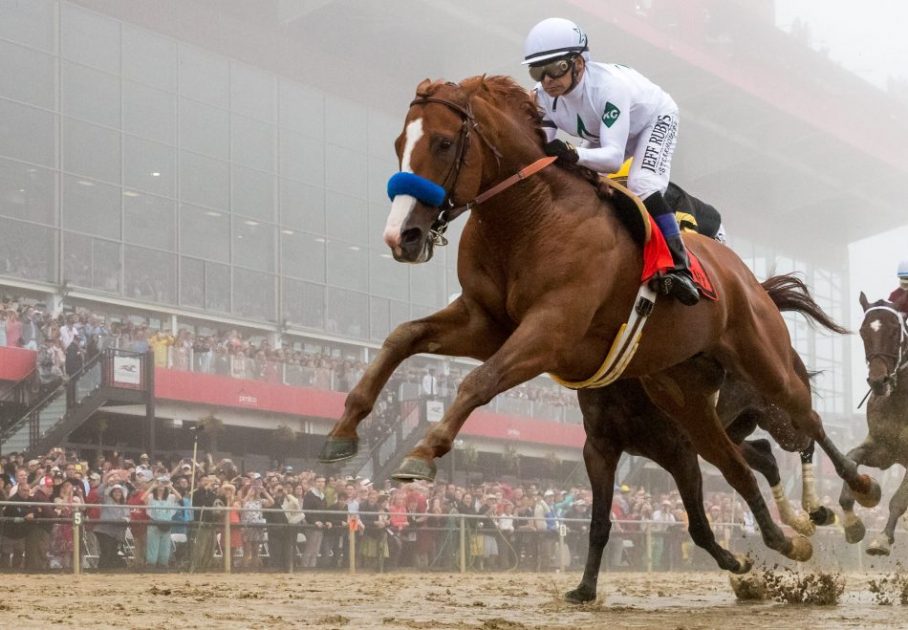
Justify – the only unbeaten US Triple Crown winner
Hawaii now figures on both sides of the pedigree of another great horse, the unbeaten 2018 American Triple Crown winner Justify, whose global success has yielded 4 Group 1 winning two year olds this year: In Europe, Justify sired the unbeaten Champion City of Troy as well as France’s Champion 2 Year Old filly, Opera Singer.
In America, this month, he sired two 2023 Breeders Cup Juvenile winners in Hard to Justify and Just FYI.
Hawaii (1964 by Utrillo-Ethane) made an indelible mark in our history, a pantheon of greatness whose influence has stretched globally.
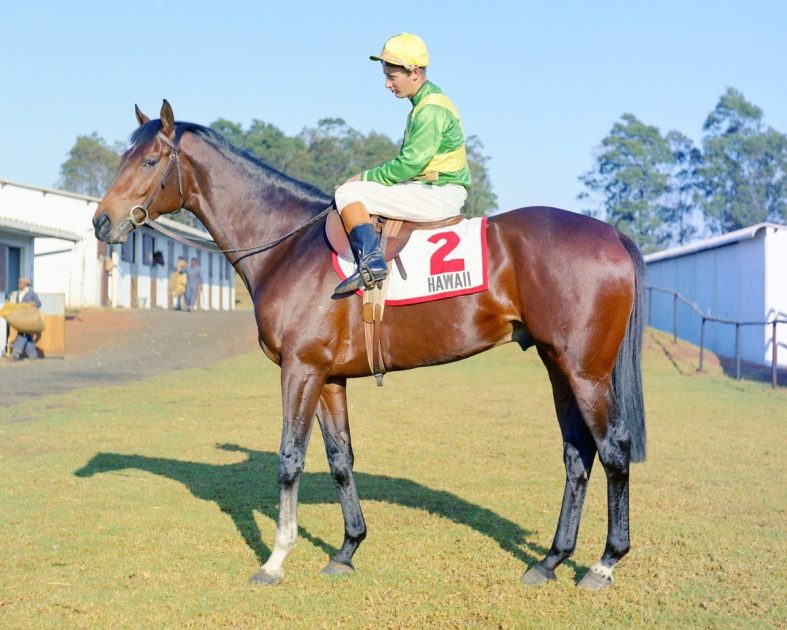
HAWAII-b.c.-Utrillo-II-Ethane-Champion-3-year-old-of-1969-pictured-at-Summerveld-with-Raymond-Rhodes-up (Pic – courtesy of Robin Bruss)
But have you ever wondered how he came to be bred, and what lesson we can learn in the hope that we may breed his like again?
Let’s start the story at the beginning: Ethyl (1936) by Clustine out of Armond (GB) was bred in Colesberg by Allan Robertson, Chairman of both the TBA and the Jockey Club and was raced by owner/trainer, Joe Azzie, older brother of legendary trainer George.
Records show that George started training in 1922, so the Azzie dynasty has been continuously in horseracing for more than 100 years.
Ethyl was spectacularly fast and precocious, a speedball juvenile who won her debut in October over 4 furlongs. Five weeks later she won again over 4 furlongs, this time against 30 runners.
It was apparent that she was the fastest juvenile on the Rand and she aimed for the SA Nursery Plate against the colts. It was run on Boxing day, December 26, and not in April as it is now.
Ethyl gave the colts a galloping lesson, skating home by 3.5 lengths to complete her hat trick. As there were no feature events for fillies, her next start as a 2 year old was in a top division handicap against older horses – and she remained there racing against colts, winning 10 Top division handicaps.
She was brilliantly fast, eminently sound, durable, and consistent and the best sprinting filly of her time – admirable qualities to take forward as a broodmare.
Robertson mated Ethyl to the new sire Mehrali (GB) (1939) an English sprinter, which Timeform’s Phil Bull described as “one of the fastest sprinters in Great Britain and should have won the 5f Nunthorpe Stakes but for facing the wrong way when the starting tapes went up!”.
Mehrali (GB) was bred by The Aga Khan, by English Derby winner Mahmoud out of Una and therefore half-brother to British 2000 Guineas winner Palestine.
It was expected that the Mehrali – Ethyl combination would be a flyer. Named Ethane (1947), she was sold at the Rand Easter Sales 1949 to JA Carney to race in Cape Town.
She was precocious, winning her second start over 1000m as a 2 year old in December, but her racing career fizzled and after 14 starts, she passed into the hands of Archie Dell’s Platberg Stud in Colesberg.
Ethane was destined to become one of the great mares of South Africa breeding, becoming Broodmare of the Year 1968 and from 13 runners, produced 11 prolific, sound, tough, durable winners who won a staggering 96 races between them.
Amongst them were two Champion Colts, Hawaii and his half-brother William Penn (16 wins, from 5f to 10f, including the Merchants H. and Chairmans S. at 6f, the SA Guineas at a mile., and the Champion Stakes and the Cape Met at 10f – and raced until he was 11 years old).
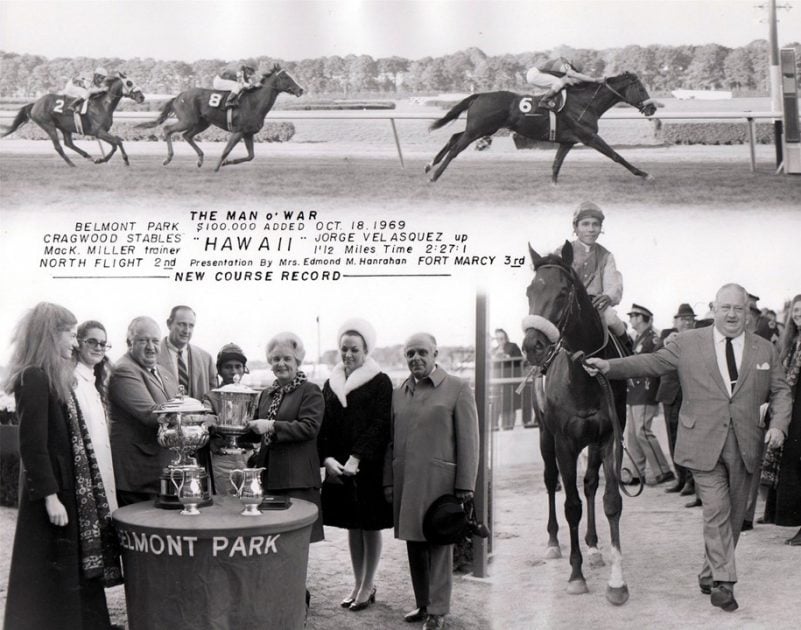
There were also two Stakes Winning full sisters to William Penn named Ethylwood (who won 9 races) and Entrance (who won 8), both brilliantly fast juvenile stakes winners who extended their speed to middle distances as older horses.
What made Ethane such a phenomenon at stud when she managed only one win herself?
Generally, the breed advances on the basis of racing class, but it has become a common factor that a daughter of two champion parents, often transmits their genes. The class jumps a generation – and in Ethane’s case, the pure speed proved the lightning rod which enabled her progeny to have success.
Of all the many Stakes Winners that descend from her, only Hawaii managed to win Graded Stakes beyond 2000m.
In 1963, Archie Dell imported a new stallion named Utrillo II, who had been bred by the famous Federico Tesio, breeder of the peerless champions Nearco and Ribot, at his Dormello Farm in Italy.
Utrillo was an above average racehorse, but quite far removed from top class. Unraced at 2 years, he won 6 of his 9 starts as a three year old in Italy and England and was 3rd in the Italian Guineas.
His sire Toulouse Lautrec had won Italy’s older horse championship race, the Gran Premio de Milano (over 15 f.) whilst his dam was by the Ascot Gold Cup (20 f.) winner Alycidon. Utrillo was bred to be a supreme stayer, but he only won below a mile.
Mating the proven speed mare Ethane to the young stallion Utrillo was an effort to help the stallion get started at stud. The resulting foal, Ethane’s 11th produce was born when she was 17 years old and became her very best – champion Hawaii.
For Utrillo, Hawaii was an exception, proving that any stallion can get one champion in a lucky break. He covered an average of just 10 mares per year through 12 crops to produce 128 foals – just under half, 56 managed a win. Hawaii was his only Gr.1 winner.
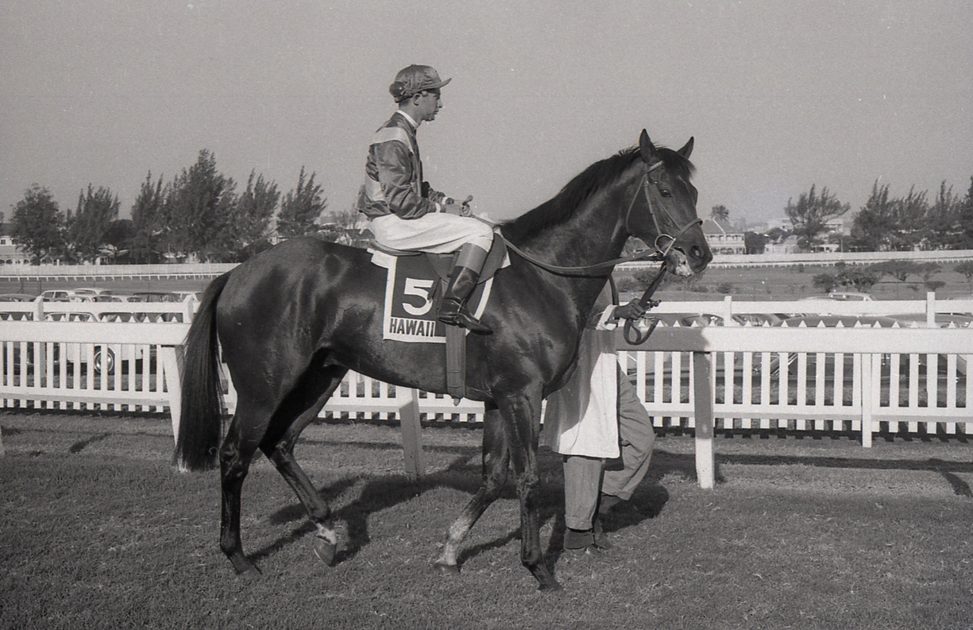
Hawaii on parade before winning the SA Guineas (Pic – courtesy of Robin Bruss)
Hawaii was a very beautiful yearling and 1966, the yearling sales were held at Milner Park in the Agricultural Showgrounds in central Johannesburg. Today, it’s the location of Wits University.
Yearlings were judged by a panel on conformation back then and a rosette awarded to the “Champion Show Yearling”.
The award went to Hawaii, and one of the three judges was George Azzie, who backed his judgement by buying Hawaii for his biggest patron, the American magnate Charles Engelhardt for 4,300 Guineas, the third highest price.
Perhaps predictably for a grandson of speedball sprinters Mehrali and Ethyl, Hawaii was in the first juvenile race of the season over 4 furlongs in October. He won by 7 lengths.
Then he won SA Nursery on Boxing Day by 8 lengths, the East Rand Juvenile S. over 5 furlongs at odds of 1/10 by 8 lengths in new track record time 57,5 sec. and the African Breeders Plate over 6 furlongs in Durban.
“Here is a 2 year old” wrote columnist Allan Breck “who in time will equal the feats of the Giants of the South African turf”.
And then, in his next start, he got beat.
It was the Champion Nursery at Greyville over 7 furlongs and he was only 3rd. Did he not stay ? Was he all about speed inheritance? When would the Tesio stamina breeding of his sire kick in?
Azzie silenced doubters of Hawaii’s class when he ran him 17 days later over 6 furlongs in a B Division handicap at Clairwood. The handicapper set him an impossible task. He was a 2 year old and had to concede 20 lbs to Young David, a 5 year old winner of 6 races. Hawaii was 38 lbs worse off than WFA.
He still won by 6 lengths. This is equivalent to an 18 length beating of older horses. What had just happened? Horses don’t do this. It was the emergence of a superstar.
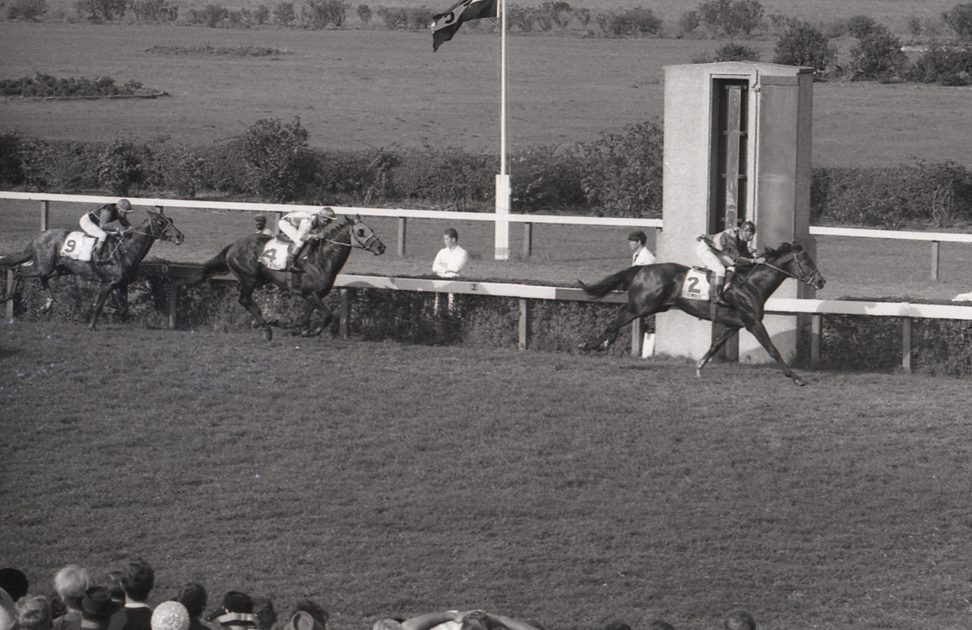
Hawaii wins the 1968 Gr1 Clairwood Winter Handicap beating Queen’s Plate and Met hero, Peter Beware (Pic – courtesy of Robin Bruss)
Over the next 9 months he won his next 8 starts in a row, many of them by 6 lengths and 8 lengths margins. He was the first and only horse to win the three Guineas : The Royal Reserve Guineas in Johannesburg, the Cape Guineas in Cape Town and SA Guineas in Durban.
Hot favourite for the 1968 Durban July handicap over 2100m, he had a big weight and it even with the 3000m stamina influence of his grandsire Toulouse Lautrec in his pedigree, he finished only fourth two lengths off the winner and his jockey proclaiming he didn’t get the trip.
But the handicap weights also told a story. The 33/1 winner Chimboraa was a 5 year old carrying 98 lbs. Hawaii met him on 23 lbs (10 lengths) worse terms than WFA and therefore he ran an 8 lengths better race than the winner. William Penn came in second.
George Azzie backed Hawaii up 21 days later in the Clairwood Winter Handicap over 1800m., and Hawaii slaughtered the best older horses in the country by 3 lengths.
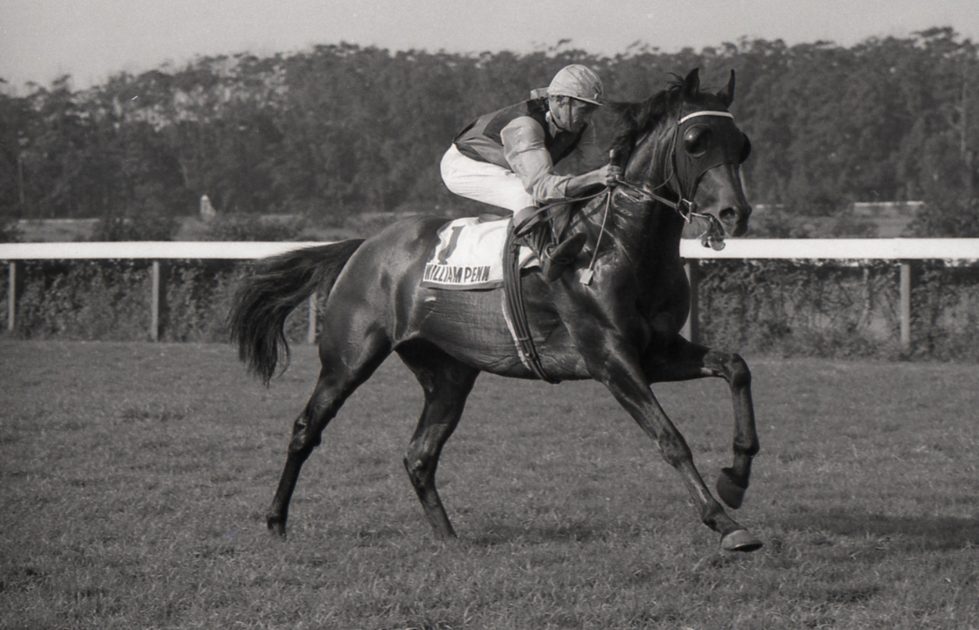
The grand galloper, William Penn (Pic – courtesy of Robin Bruss)
Three weeks later, the Champion Stakes was his 10th start in 11 months, and memorably, he and his brother William Penn fought out the finish, with William Penn prevailing in a photo, Hawaii weakening in the last few strides at 2000m.
Engelhard decided to take Hawaii to America and prove him against the best in the world. His farewell race in South Africa was the Transvaal Champion Stakes over 6 furlongs. At 1/5 favourite, he coasted home by 4 lengths to rousing cheers and then it was on to America.
“He is the best looking, smartest, best dispositioned, and best actioned horse I have ever had” said Hall of Fame American trainer Mack Miller later on. “There was no way to fault him”
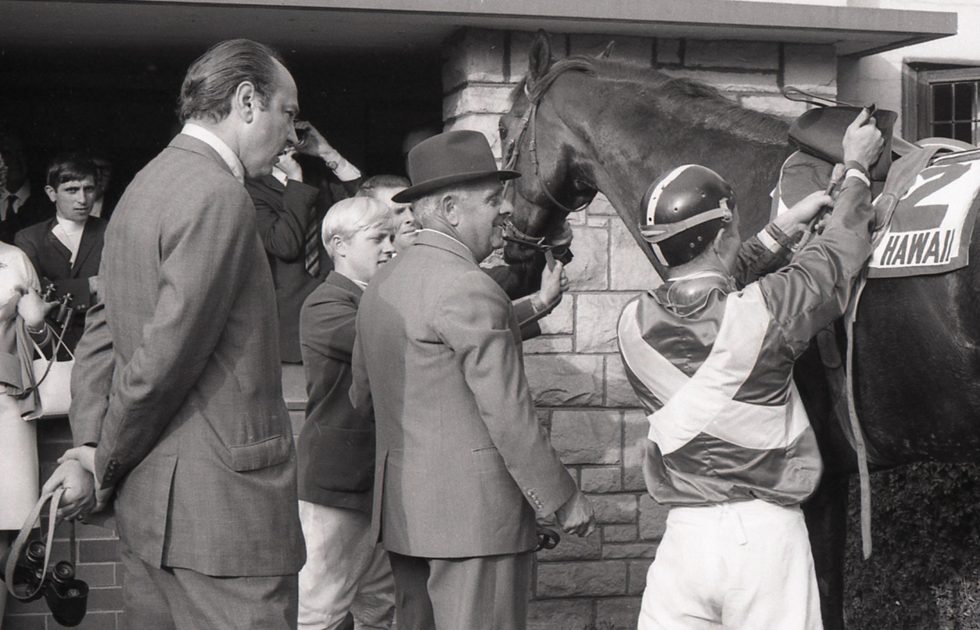
Flashback 55 years! Hawaii in the winner’s box with trainer George Azzie and jockey Raymond Rhodes – apprentice Marty Schoeman looks on (Pic – Pic courtesy of Robin Bruss)
With Six wins in 10 races, two Group 1 wins, a world class Timeform 131 rating, the title of Champion Turf Horse in America and a $1,2 million stud syndication, Hawaii established a global reputation in USA for himself and for South Africa.
With a total of 21 wins in 26 starts, he was thoroughly tested for speed, stamina, character, toughness, soundness and durability in two hemispheres and two continents.
More importantly, as he got older and matured, he relaxed more in his races, holding his speed in reserve for the finishing burst, and was able to stretch out further and win the United Nations S. (Gr.1) at 9,5 furlongs, and in winning the Man O War S. (Gr.1) at Belmont Park in New York over 12 furlongs, he laid the stamina ghost to rest.
Now fully loaded with Speed AND Stamina on his CV, he was recognized for greatness: the complete horse.
Standing at Kentucky’s famous Claiborne Farm, who in the 1970s stood 18 stallions from 9 different countries, sourced from around the world in the belief that mixing international bloodlines created a type of ‘hybrid vigour.’
Hawaii’s stud record produced some admirable statistics. However, he always covered small books of mares, never had more than 25 foals in a crop, and his record and legacy speak volumes for his modest level of support at stud.
He sired 73% winners to runners, and an impressive 13% of his runners won Stakes Races, where the breed average is 3%. He sired 34 Stakes Winners who won 56 stakes races and they excelled on turf.
For all the speed Hawaii showed, his three best turf runners produced a first, a second and a third place in the English Derby at 12 furlongs.
His son Henbit won the 1980 Derby, a landmark achievement for a South African bred sire. His daughter Sun and Snow won the Kentucky Oaks and he was earmarked as a Classic stallion.
Relationship to JUSTIFY:
On the SIRE half of Justify’s pedigree is Island Kitty (1976), a Gr.1 placed daughter of Hawaii who produced the Gr.1 Saratoga Hopeful Stakes winner Hennessy, who later became the sire of Breeders Cup Champion 2 Year old Johannesburg, the grandsire of JUSTIFY.
On the DAM half of Justify’s pedigree is Sailaway (1976), who achieved fame by becoming the grandam of 1993 Kentucky Derby winner Lil E Tee, and 3rd dam of Ghostzapper, the world’s best racehorse 2004, winner of 5 Gr.1 races, $3,4 million and sire of 98 SW who earned $120 million.
It was a Ghostzapper mare that foaled Justify, whose 6 starts yielded 6 wins including the American Triple Crown and who stands at Coolmore’s Ashford Stud in America.
This month, a Ghostzapper filly, Goodnight Olive, winner of two Breeders Cup Sprints Gr.1, sold for $6 million at the Fasig Tipton Sale, to be the highest selling mare in the world in 2023.
The exceptionally big powerful Justify is rapidly attaining the status one of the world’s elite stallions – he is the first American sire to produce four Gr.1 winning juveniles in a single crop since legendary Mr Prospector almost 40 years ago.
The double line of Hawaii in Justify’s pedigree is far back and the influence might be marginal depending on your view of distant linebreeding. But, it still gives every South African pause to cheekily reflect for just a moment : If it wasn’t for Hawaii and South African breeding, this year’s juvenile champions of Europe, France and the USA and the $6 million mare, would not exist !
The question for us at home in South Africa to answer now is, how do we repeat it?
The Author
The Sporting Post recently welcomed Robin Bruss as a guest columnist. Robin is a widely respected industry expert and a man with an encyclopaedic knowledge of horseracing and breeding.
He has been involved with the sport all of his life, as a Gr1 winning owner and breeder, agent, auctioneer, journalist, television presenter, researcher, administrator and consultant.






